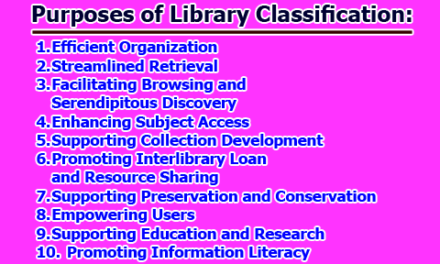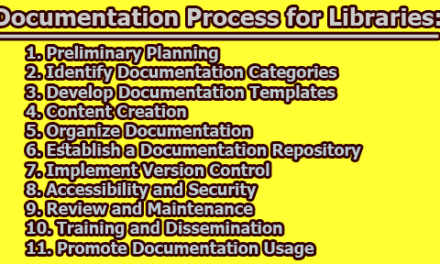Importance of Selection Policy in Library:
The selection policy is an essential document that outlines the criteria for selecting materials to be included in a library’s collection. Here’s why it’s important for different aspects of the library:
- Core Collection: The selection policy guides the development of the core collection, which includes materials that are essential to the library’s mission and meet the needs of its users. The policy ensures that the core collection is balanced, relevant, and up-to-date.
- Supporting Collection: The selection policy also helps to guide the development of the supporting collection, which includes materials that complement and extend the core collection. The policy ensures that the supporting collection is relevant and diverse, meeting the needs of a variety of users.
- Peripheral Collection: The selection policy also guides the development of the peripheral collection, which includes materials that are less central to the library’s mission. The policy ensures that the peripheral collection is appropriate for the library’s users and does not compromise the quality of the core and supporting collections.
- Kinds of Resources: The selection policy outlines the types of resources that the library will collect, such as books, journals, audiovisual materials, and online resources. This ensures that the library’s collection is diverse and meets the needs of its users.
- Formats: The selection policy also addresses the formats of materials to be collected, such as print, electronic, or audiovisual. This helps to ensure that the library’s collection is accessible to all users and meets their individual preferences and needs.
- Online Sources: The selection policy includes guidelines for selecting online sources, such as databases and websites. This helps to ensure that the library’s online collection is reliable, relevant, and up-to-date.
- Inter-library loan and document delivery: The selection policy also addresses inter-library loan and document delivery services, outlining the criteria for requesting and providing materials from other libraries. This ensures that the library’s users have access to a wider range of materials than the library can collect on its own.
- Project-based Products and Services: The selection policy guides the selection of project-based products and services that the library may develop, such as digitization projects or community outreach programs. This ensures that these initiatives are aligned with the library’s mission and meet the needs of its users.
- Budgeting: The selection policy helps to guide the library’s budgeting process by outlining the criteria for selecting materials that are both essential and cost-effective. This ensures that the library is able to allocate its resources efficiently and effectively.
- Collection Development: The selection policy plays a critical role in the overall collection development process. It helps to ensure that the library’s collection is developed in a strategic and intentional manner, aligning with the library’s mission and meeting the needs of its users. This is especially important in today’s rapidly changing information landscape, where librarians must navigate an ever-growing array of resources and formats.
In summary, the selection policy is important for guiding the development of a library’s collection, ensuring that it is balanced, relevant, and meets the needs of its users. It addresses the different aspects of the library’s collection, including the core, supporting, and peripheral collections, the types of resources and formats, online sources, inter-library loan and document delivery, and project-based products and services.

Assistant Teacher at Zinzira Pir Mohammad Pilot School and College










